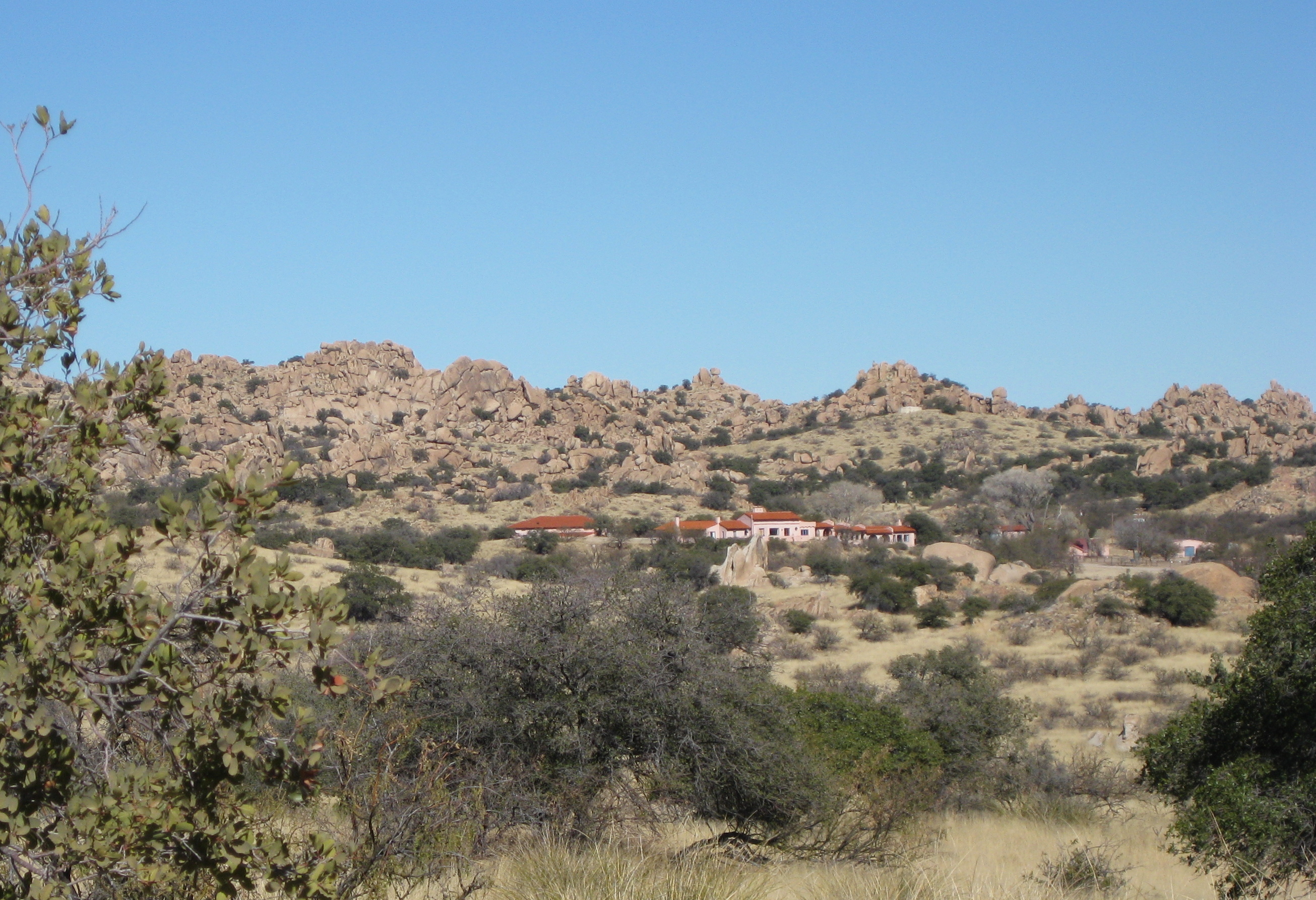|
Spencer MacCallum
Spencer Heath McCallum (December 21, 1931 – December 17, 2020), commonly known as Spencer MacCallum, was an American anthropologist, business consultant and author. He was especially noted for his discovery of the pottery of the town of Mata Ortiz, Chihuahua, Mexico. Personal life MacCallum graduated from Princeton University with a Bachelors in art history and received a Masters of Arts in social anthropology from the University of Washington. He specialized in studying the life, culture and stateless society of Northwest Coast Indians.Spencer MacCallum:Looking Back and Forward, Lewrockwell.com, December 19, 2003. MacCallum was the grandson of Spencer Heath, inventor and dissenter from mainstream Georgism. Career In 1956, MacCallum and his grandfather founded the Science of Society Foundation, which published a number of works, including Heath's book ''Citadel, Market, and Altar.'' MacCallum was for many years an active researcher and lecturer for academic and business cl ... [...More Info...] [...Related Items...] OR: [Wikipedia] [Google] [Baidu] |
Amerind Foundation
The Amerind Foundation is a museum and research facility dedicated to the preservation and interpretation of Native American cultures and their histories. Its facilities are located near the village of Dragoon in Cochise County, Arizona, about 65 miles east of Tucson in Texas Canyon. William Shirley Fulton (1880–1964), an archaeologist, established the Amerind Foundation in 1937. The Amerind Foundation's building was designed by Tucson architect Merritt Starkweather and contains one of the finest collections of archaeological and ethnological artifacts in the country as well as a sizable research library. According to the Foundation's literature, "Amerind" is a contraction of the words "American" and "Indian". Museum exhibits The museum's permanent exhibits include archaeological artifacts from the Amerind property by founder William Shirley Fulton and later by director Charles C. Di Peso, as well as items found at Di Peso at Casas Grandes, Chihuahua, Mexico and other exc ... [...More Info...] [...Related Items...] OR: [Wikipedia] [Google] [Baidu] |
Voluntary Community
A voluntary society, voluntary community or voluntary city is a term used in right-libertarianism to describe an entity in which all property (including streets, parks, etc.) and all services (including courts, police, etc.) are provided through what the proponents of the term call "voluntary means" and in which they include private or cooperative ownership. In a "voluntary society", as described by David Beito, Peter Gordon and Alexander Tabarrok, the notion of something being "privately" or "cooperatively" owned would be "radically different" from "monopolistic privatization with state subsidies", or "monopolistic control of public resources by the state", respectively. Instead, courts might be replaced with dispute resolution organizations; police with volunteer-based community defense organizations or private security agencies and crime insurers; transportation authorities with community road associations and rail counterparts; etc. These services were the subject of the bo ... [...More Info...] [...Related Items...] OR: [Wikipedia] [Google] [Baidu] |
Private Community
A private community is a residential community that can be an association or a proprietary organization. Associations can include condominiums, homeowner associations or cooperatives. Whereas governmental communities are financed with taxation, where taxes typically have little connection with benefits, private communities' benefits are financed by payments from its members. In a hotel, for example, the public goods such as elevators and security are paid for from room charges. One early American example was Lucas Place, created in 1851 in St. Louis, Missouri, the first of about 50 such private places unique to the city. Today, there are "60 million people who now live in roughly 300,000 private communities" in the United States. A noteworthy Canadian example, Arbutus Ridge Seaside Community for Active Adults in the Cowichan Valley on Vancouver Island was the first comprehensive retirement community built in Canada. It subsequently became the template and proving ground for ... [...More Info...] [...Related Items...] OR: [Wikipedia] [Google] [Baidu] |
Archaeological
Archaeology or archeology is the scientific study of human activity through the recovery and analysis of material culture. The archaeological record consists of artifacts, architecture, biofacts or ecofacts, sites, and cultural landscapes. Archaeology can be considered both a social science and a branch of the humanities. It is usually considered an independent academic discipline, but may also be classified as part of anthropology (in North America – the four-field approach), history or geography. Archaeologists study human prehistory and history, from the development of the first stone tools at Lomekwi in East Africa 3.3 million years ago up until recent decades. Archaeology is distinct from palaeontology, which is the study of fossil remains. Archaeology is particularly important for learning about prehistoric societies, for which, by definition, there are no written records. Prehistory includes over 99% of the human past, from the Paleolithic until the adve ... [...More Info...] [...Related Items...] OR: [Wikipedia] [Google] [Baidu] |
Folk Art
Folk art covers all forms of visual art made in the context of folk culture. Definitions vary, but generally the objects have practical utility of some kind, rather than being exclusively decorative. The makers of folk art are typically trained within a popular tradition, rather than in the fine art tradition of the culture. There is often overlap, or contested ground with 'naive art'. "Folk art" is not used in regard to traditional societies where ethnographic art continue to be made. The types of objects covered by the term "folk art" vary. The art form is categorised as "divergent... of cultural production ... comprehended by its usage in Europe, where the term originated, and in the United States, where it developed for the most part along very different lines." For a European perspective, Edward Lucie-Smith described it as "Unsophisticated art, both fine and applied, which is supposedly rooted in the collective awareness of simple people. The concept of folk art ... [...More Info...] [...Related Items...] OR: [Wikipedia] [Google] [Baidu] |
Casas Grandes
Casas Grandes (Spanish for ''Great Houses''; also known as Paquimé) is a prehistoric archaeological site in the northern Mexican state of Chihuahua. Construction of the site is attributed to the Mogollon culture. Casas Grandes has been designated a UNESCO World Heritage Site under the purview of INAH and a " Pueblo Mágico" since 2015. Casas Grandes is one of the largest and most complex Mogollon culture sites in the region. Settlement began after 1130 AD, and the larger buildings developed into multi-storied dwellings after 1350 AD. The community was abandoned approximately 1450 AD. Casas Grandes is regarded as one of the most significant Mogollon archaeological zones in the northwestern Mexico region, linking it to other sites in Arizona and New Mexico in the United States, and exhibiting the expanse of the Mogollon sphere of influence. Casas Grandes complex is located in a wide, fertile valley on the Casas Grandes or San Miguel River, south of Janos and northwest of th ... [...More Info...] [...Related Items...] OR: [Wikipedia] [Google] [Baidu] |
Mata Ortiz
Mata Ortiz is a small village in the state of Chihuahua, Mexico, less than from the US-Mexico border. The community is one of the designated ''localidades'' (localities) in the ''municipio libre'' (municipality) of Casas Grandes, one of several such pueblos in a wide, fertile valley long inhabited by indigenous people. Mata Ortiz is located at the base of a mountain known as El Indio and on the west bank of the Rio Palanganas, a tributary of the Rio Casas Grandes. The ancient ruins of Casas Grandes are located nearby. As of 2010, Mata Ortiz had a population of 1,182. History The town was originally established as “Pearson” during the Porfirio Díaz presidency in the late 19th century with its economy based on agriculture, timber, cattle and the nearby railroad. After the Mexican Revolution the town’s name was changed, to honor Juan Mata Ortiz, a local hero who fought against the Apaches in the 19th century. After the Revolution was in influx of people and land was redi ... [...More Info...] [...Related Items...] OR: [Wikipedia] [Google] [Baidu] |
Artisan
An artisan (from french: artisan, it, artigiano) is a skilled craft worker who makes or creates material objects partly or entirely by hand. These objects may be functional or strictly decorative, for example furniture, decorative art, sculpture, clothing, food items, household items and tools and mechanisms such as the handmade clockwork movement of a watchmaker. Artisans practice a craft and may through experience and aptitude reach the expressive levels of an artist. History The adjective "artisanal" is often used in describing hand-processing in contrast to an industrial process, such as in the phrase '' artisanal mining''. Thus, "artisanal" is sometimes used in marketing and advertising as a buzz word to describe or imply some relation with the crafting of handmade food products, such as bread, beverages or cheese. Many of these have traditionally been handmade, rural or pastoral goods but are also now commonly made on a larger scale with automated mech ... [...More Info...] [...Related Items...] OR: [Wikipedia] [Google] [Baidu] |
Alternative Currency
A complementary currency is a currency or medium of exchange that is not necessarily a national currency, but that is thought of as supplementing or complementing national currencies. Complementary currencies are usually not legal tender and their use is based on agreement between the parties exchanging the currency. According to Jérôme Blanc of Laboratoire d'Économie de la Firme et des Institutions, complementary currencies aim to protect, stimulate or orientate the economy. They may also be used to advance particular social, environmental, or political goals. When speaking about complementary currencies, a number of overlapping and often interchangeable terms are in use: local or community currencies are complementary currencies used within a locality or other form of community (such as business-based or online communities); regional currencies are similar to local currencies, but are used within a larger geographical region; and sectoral currencies are complementary curr ... [...More Info...] [...Related Items...] OR: [Wikipedia] [Google] [Baidu] |
Xeer
''Xeer'' (pronounced ) is the traditional legal system of Somalia, Somaliland, Djibouti, Somali Region, and the North Eastern Province in Kenya. One of the three systems from which formal Somali law draws its inspiration, the others being civil law and Islamic law. It is believed to pre-date Islam, although it was influenced by Islam and retains the faith elements, the proceeding under rule pre-date Islam. Under this system, elders, known as the serve as mediator judges and help settle court cases, taking precedent and custom into account. Xeer is polycentric in that different groups within Somali society have different interpretations of xeer. Application of ''xeer'' Somali society is traditionally structured around a patriarchal clan based system, subdivided into sub-clans, then lineages, and finally ''mag'' groupings. These groups are bound together either by family ties or contract. ''Xeer'' justice usually revolves around the latter groups, as these are the small ... [...More Info...] [...Related Items...] OR: [Wikipedia] [Google] [Baidu] |
Customary Law
A legal custom is the established pattern of behavior that can be objectively verified within a particular social setting. A claim can be carried out in defense of "what has always been done and accepted by law". Customary law (also, consuetudinary or unofficial law) exists where: #a certain legal practice is observed and #the relevant actors consider it to be an opinion of law or necessity ('' opinio juris''). Most customary laws deal with ''standards of the community'' that have been long-established in a given locale. However, the term can also apply to areas of international law where certain standards have been nearly universal in their acceptance as correct bases of action – for example, laws against piracy or slavery (see '' hostis humani generis''). In many, though not all instances, customary laws will have supportive court rulings and case law that have evolved over time to give additional weight to their rule as law and also to demonstrate the trajectory of evo ... [...More Info...] [...Related Items...] OR: [Wikipedia] [Google] [Baidu] |

.jpg)
.jpg)


